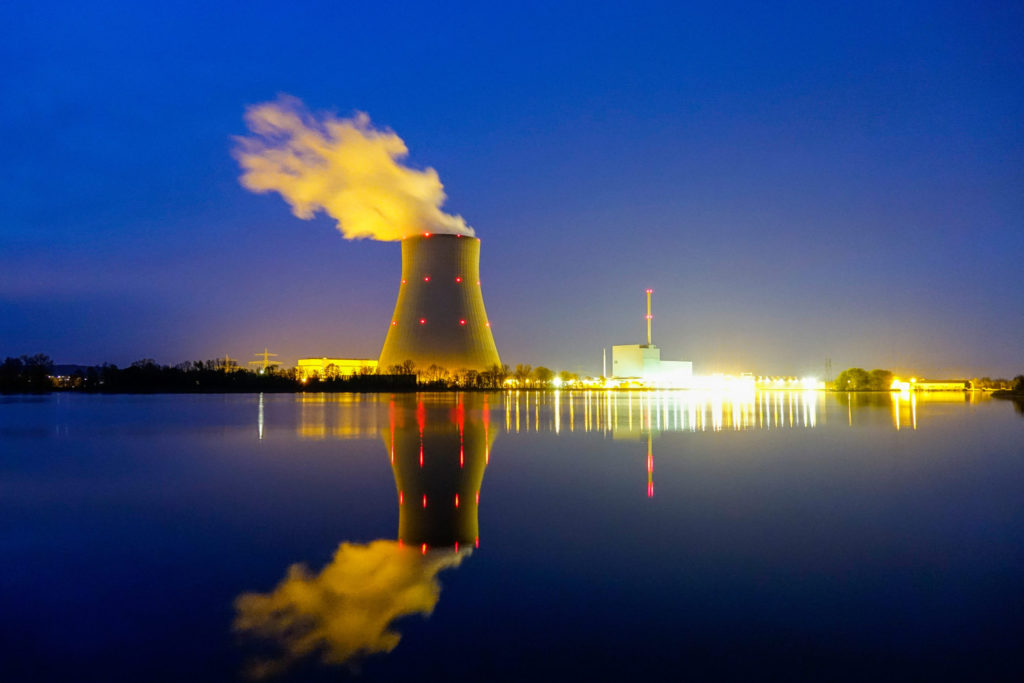
The spot price of uranium continues to rise, boosted by pledges to triple nuclear power by mid-century, supply hiccups from producers such as Cameco (TSX: CCO; NYSE: CCJ) and the looming threat of a ban on Russian exports to the West.
Uranium hit $91 per lb. this week, another record since triple-digit prices in 2007 and the fallout after the 2011 Fukushima disaster in Japan that saw several countries curb nuclear energy plans. The price has increased from about $50 per lb. at mid-year.
“Some call it a nuclear renaissance but I like to think of it as a resurgence given the growing momentum,” John Ciampaglia, CEO of Sprott Asset Management, which runs the Sprott Physical Uranium Trust (TSX: U.U for USD; U.UN for CAD), said in a blog post on Wednesday. “Who would have thought that in just two years, public sentiment and government support would have shifted this strongly?”
The price could now be near a level that can sustain new mining projects as the globe increasingly looks to atomic power to help combat global warming. The increase comes as 24 nations including the United States, Japan, Canada, Britain and France pledged last month in Dubai at the 28th Conference of the Parties to the United Nations Framework Convention on Climate Change, known as COP28, to triple nuclear power capacity by 2050.
China, which wasn’t part of that promise, still leads global nuclear plant construction with plans to nearly double capacity to 100 gigawatts by the end of this decade. The Asian country has 22 of 58 plants being built worldwide.
“Uranium is one of the few commodities where China is not the largest consuming country, but we expect it to be so by 2028,” BMO Capital Markets commodities analyst Colin Hamilton said in a note on Wednesday. “However, having taken significant volumes of excess uranium from the market over the past decade, we see China as adequately supplied with raw material.”
Incremental utility buyers are more likely to be located in Europe and North America where reactor lives are being extended, Hamilton said.
However, meeting that demand is proving difficult for leading suppliers such as Cameco, Canada’s largest, which said it may buy as much as 8 million lb. in the recently ended quarter to meet contracts. When most utility contracts are longer-term, supply shortfalls exacerbate price hikes on the spot market. Investment bank Morgan Stanley forecasts the price may hit $95 per lb. by March. In November, Sprott predicted a triple-digit price within a year to 18 months.
The plan to triple nuclear power capacity by mid-century is “highly unrealistic” because it takes so long and billions of dollars to plan, approve and build reactors, according to the World Nuclear Industry Status Report released last month. The report is funded by Germany, which shut its last reactor in April and remains opposed to the power source, although it conducts research and processes fuel.
The US Congress is considering a ban on imports of Russian uranium. It has passed the House of Representatives and awaits debate in the Senate, though most utilities in the West have been shunning its supplies since the war in Ukraine began nearly two years ago. A ban could spark retaliatory measures and Russia has plants to process uranium into fuel, whereas the US is restarting one. However, the Biden administration is set to sign a $2 billion boost to the country’s nuclear industry into law within weeks.
Numerous mothballed mines in Australia, the U.S. and Africa are planned for restarts this year including Paladin Energy’s (ASX: PDN) Langer Heinrich in Namibia and Boss Energy’s (ASX: BOE) Honeymoon operation in South Australia. EnCore Energy (TSXV: EU) is starting output from its Rosita and Alta Mesa plants in Texas, while Energy Fuels (TSX: EFR; NYSE: UUUU) has resumed output from its Pinyon Plain, La Sal and Pandora mines in the southwest US. In Canada, Cameco is ramping up production from McArthur River in Saskatchewan.
The industry needs new mines, but a lost decade of investment after the Fukushima disaster means the supply gap will grow in the short-term, according to the Sprott Physical Uranium Trust, which holds 63 million lb. of yellowcake uranium valued at $5.78 billion.
The trust purchased 3.8 million lb. last year, the lowest since the fund was established in 2021. It plans this year to purchase no more than 9 million lb. on the spot market. It’s a prudent measure from a regulatory perspective to prevent funds competing with consumers for material in a deficit market, BMO’s Hamilton said.
“While there is lots of chatter about the impact of financial players in the market, the price gains this year have clearly been driven by utilities which purchased the most uranium in 2023 since 2012,” Sprott’s Ciampaglia said.
“The industry will require significant capital investments to meet its ambitious expansion plans,” he said. “Thankfully, investor interest in the sector is growing globally as the opportunity becomes better understood and the legacy stigma fades. As the sector grows and recapitalizes, it will attract ever larger institutions, drawn by a compelling investment thesis and improving liquidity.”